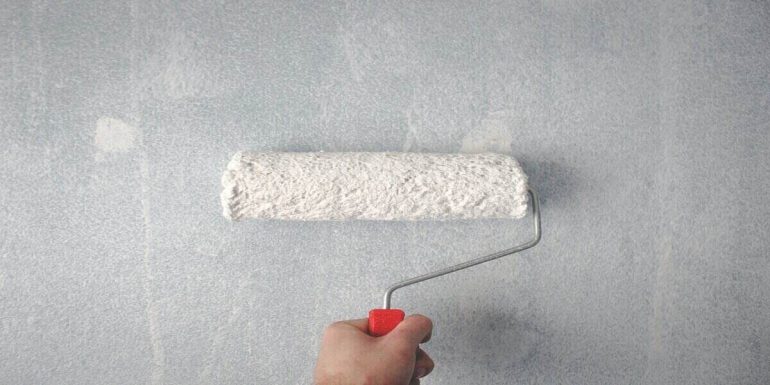When the housing market boom of late 2020 and 2021 hit, painting contractors was sent scrambling as demand exploded in a matter of only a few months.
With the market still going strong headed into 2022. The painting contractors are primed for a busy and profitable future. However, they’ll need to adjust for many challenges, particularly supply and labor shortages.
Here, we’ll take a look at what the market likely holds for new homes and painting contractors in 2022 and beyond.
State of the 2022 Housing Market

The outlook for 2022’s U.S. housing market is looking robust and healthy. Many analysts do predict that the increase in home prices will cool down somewhat.
But that’s only in comparison to the overheated market of 2021. New projects will get finished and more homes will go on the market. But demand is likely to remain high for the foreseeable future.
That’s all good news for painting companies. As developers and homeowners bring their projects into the home stretch. They’ll need experienced and reliable painters.
For painting contractors, now might be a good time to expand. And capture the benefits of the booming housing market. Unfortunately, pandemic-related challenges could show up to spoil the party.
What to Know About the Paint Shortage

Supply chain snags have been a constant problem for construction contractors in 2021. Now, paint has become the newest essential to feel the squeeze.
As of late 2021, the price of paint has skyrocketed. And it’s increasingly difficult to find in stores. That’s left painting contractors in a tough spot, and the problems could get worse.
The issues in the paint supply originate in the raw materials market. Resins, polymers, and solvents that are essential for making paint have all become harder to get, and thus more expensive.
The paint industry has a complex supply chain with a relatively small number of raw material producers. And the continued pandemic-related disruptions have magnified the dysfunction.
What to Know About the Labor Shortage

As if a paint shortage weren’t bad enough, painters are struggling with the same labor shortages that other trades have experienced.
Fewer young people are entering the painting trade today. And many older painters are retiring or changing industries. The result is that paint crews across America are having trouble staffing up to meet demand.
Labor shortages thus contribute further to slowdowns and cost increases in the painting industry.
Painting contractors who can’t fill these labor gaps can end up behind schedule and over cost — or even have to turn down potentially lucrative contracts due to staffing shortages.
Tips for Painting Contractors in 2022

1. Communicate and work closely with suppliers.

Like other shortages of building materials, it’s unclear when the paint shortage will end. In the meantime, communication with suppliers will be critical for straightening out supply chain problems.
Schedule regular check-ins with your paint vendors to find out which products are experiencing availability problems. This will also likely mean placing your orders for paint as far ahead as possible, especially if you need specific colors or coatings.
2. Make sure your estimates reflect potential increases in supply costs.
Your estimates should avoid surprises whenever possible, and that includes increases in paint and supply costs. Keep an eye on current costs and proactively incorporate them into the estimates that your business gives to clients.
If sticker shock happens, it’s better that it happens before anyone’s signed a contract. Don’t hesitate to explain the issue to clients in plain terms. There’s a good chance they’ve felt the effects at their own job, especially if they’re a general contractor.
3. Adjust to a world with longer lead times (and payment cycles).

Many general contractors have lengthened their lead times to accommodate supply slowdowns, which in turn means that painters will need to plan further ahead as well.
We already mentioned ordering paint ahead, but adjusting to longer payment cycles could be an even more painful transition.
Your accounting and cash flow forecasts may need to shift to reflect the new reality.
It’s also more important than ever to maintain open communication with other stakeholders, like GCs and project owners, since miscommunications can result in even more delays.
4. Keep an eye on other essential work supplies, too.
Painters should also stock up on the other key supplies they need to get the job done, such as garbage bags and paintbrushes. There’s no telling what might be the next item to explode in price or disappear completely.
And don’t count on finding a substitute at the last minute. It can lead to embarrassments like burst bags when you can’t find the sturdy contractor bags that you need.
To make supply chains more reliable. Many contractors now prioritize vendors with great customer service and fast shipping. Rather than searching for the absolute lowest price.
5. Make hiring and training talent a top priority.

There’s no “silver bullet” solution for the staffing shortage so commit to increasing the resources you use for recruiting great talent.
Review your job postings to ensure that they’re detailed and enticing. And consider hiring and training workers rather than only looking for pre-existing skills.
Remember that you’ll likely need to offer higher wages to offset inflation. And consider what you can do to make your company’s culture a positive one.
6. Be choosy about the contracts you accept.
Now is the time to be sure you’re choosing painting jobs that are worth your crew’s time and effort. Many painters will have their choice of contracts heading into 2022.
So being a little more selective can help conserve precious resources. Consider key factors like whether you prefer working with GCs or homeowners, exterior vs. interior jobs, and commercial vs. residential painting.
On the other hand, if you need more leads, make sure you’re listed on platforms like Angi, Houzz, and Google My Business.
Overall, painting companies have a lot of reasons to be optimistic. The road ahead does have some obstacles that will take creativity and sacrifice, especially when it comes to the supply chain.
Fortunately, the continued boom in housing will provide abundant business for any painter with the skills and experience to get the job done right.




